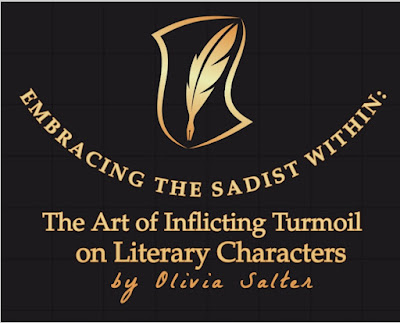20 Narrative Techniques for New Writers
by Olivia Salter
Mastering the art of storytelling is crucial for any aspiring writer. Whether you are penning a short story, novel, or screenplay, employing effective narrative techniques can elevate your writing to new heights. In this article, we will explore 20 narrative techniques that will enable new writers to engage and captivate their readers.
1. Point of View:
Choose a narrative perspective that best suits your story, such as first-person, third-person limited, or omniscient. Each perspective shapes the reader's experience differently, offering varying levels of intimacy and objectivity.
2. Dialogue:
Dialogue is a powerful tool for revealing character traits, advancing the plot, and adding authenticity to your writing. Craft engaging conversations that reflect distinct character voices.
3. Description:
Vivid descriptions help readers visualize settings, characters, and emotions. Utilize rich sensory details to bring your story to life.
4. Show, don't tell:
Rather than simply informing readers, show them the story through actions, dialogue, and descriptive language. Let readers draw their own conclusions and immerse themselves in the narrative.
5. Foreshadowing:
Build anticipation and suspense by subtly hinting at future events. Foreshadowing adds depth to your storytelling and keeps readers engaged.
6. Flashback:
By incorporating flashbacks, you can provide background information, enhance character development, or offer a fresh perspective. Use them strategically to deepen the narrative experience.
7. Symbolism:
Symbols are powerful storytelling tools that convey deeper meanings and emotions. Infuse your narrative with symbols to add layers of depth and complexity to your writing.
8. Imagery:
Engage readers' senses through vivid imagery. Create mental pictures that evoke strong emotions and enable readers to connect with your story at a deeper level.
9. Conflict:
Conflict drives a story forward and keeps readers engaged. Incorporate both internal and external conflicts to create tension and propel your narrative.
10. Plot Twists:
Surprise your readers with unexpected plot twists. Well-timed and well-executed twists can leave readers astonished and eager to turn the page.
11. Mood and Atmosphere:
Manipulate the mood and atmosphere of your story through the use of literary devices such as tone, setting, and pacing. Craft the right ambiance to convey the desired emotions.
12. Character Development:
Bring your characters to life by providing them with unique personalities, aspirations, and flaws. Show their growth and transformation throughout the narrative.
13. Unreliable Narrator:
Challenge readers' perceptions by using an unreliable narrator. This technique adds intrigue and suspense as the reader questions the truthfulness of the narrative.
14. Irony:
Employ irony to create contrasting situations between what is expected and what actually happens. This can add depth, humor, and irony to your storytelling.
15. Epiphany:
Allow your characters to experience moments of revelation or self-discovery. Epiphanies add realism and emotional depth to your storytelling.
16. Pacing:
Master the art of pacing by balancing slower and faster sections to maintain readers' interest. Carefully structure the narrative to create tension, build suspense, and give readers a chance to breathe.
17. Metaphor and Simile:
Enhance your writing with metaphors and similes to make abstract concepts more tangible and relatable. These literary devices add depth and beauty to your language.
18. Intertextuality:
Referencing or alluding to other literary works can deepen the richness and meaning of your narrative. Intertextuality allows you to connect your story to a larger literary context.
19. Multiple Timelines:
Crafting a narrative with multiple timelines adds complexity and intrigue. It allows you to explore different periods, perspectives, and themes within a single story.
20. Cliffhangers:
End chapters or sections with cliffhangers to create anticipation and propel readers forward. Cliffhangers keep readers hooked and eager to continue the story.
In conclusion, mastering these narrative techniques is essential for aspiring writers. Each technique enhances different aspects of storytelling, helping to engage readers, evoke emotions, and create memorable stories. Experiment with these techniques, find your unique voice, and continue growing as a skilled storyteller. Happy writing!
👉Narrative Techniques books at Amazon







